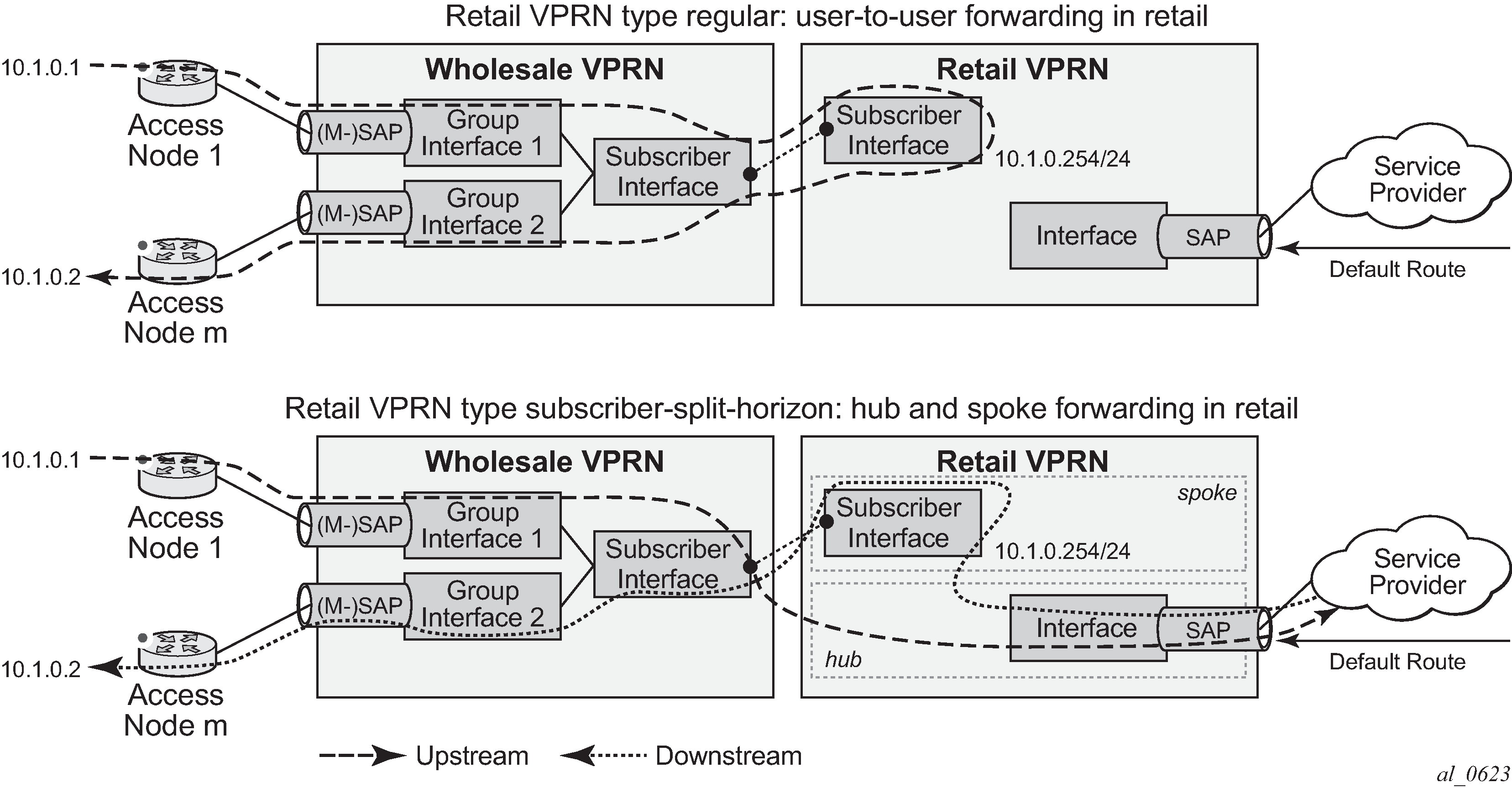In some cases, hub-and-spoke-type forwarding is necessary for the retailer’s VPRN. When the retailer expects all subscriber traffic to reach its router (for accounting, monitoring, wiretapping, and so on) normal best-hop behavior within the retailer VPRN is wanted. Any subscriber-to-subscriber traffic is forwarded within the VPRN preventing the retailer from receiving these packets. To force all subscriber packets to the retailer network, a hub-and-spoke topology is defined: type subscriber-split-horizon. It can be used to force all subscriber traffic (upstream) to the retailer’s network. The system requires that the operator shut down the VPRN service to enable this flag.
With retail VPRN type configured to subscriber-split-horizon, routes learned from MBGP, IGP through a regular interface, static routes through regular interfaces and locally attached regular interface routes are considered hub routes and are used for upstream traffic forwarding. Subscriber subnets cannot be used for upstream traffic forwarding. Downstream traffic uses routes in both hub and spoke routing instances.
Figure: Wholesale retail – hub-and-spoke forwarding shows user-to-user traffic forwarding for both retail VPRN types: regular and subscriber-split-horizon.

Hub-and-spoke forwarding can also be used in combination with wholesale unicast RPF (uRPF) check. The uRPF is performed on upstream traffic on spoke routes (subscriber subnets) and the forwarding uses hub routes only.